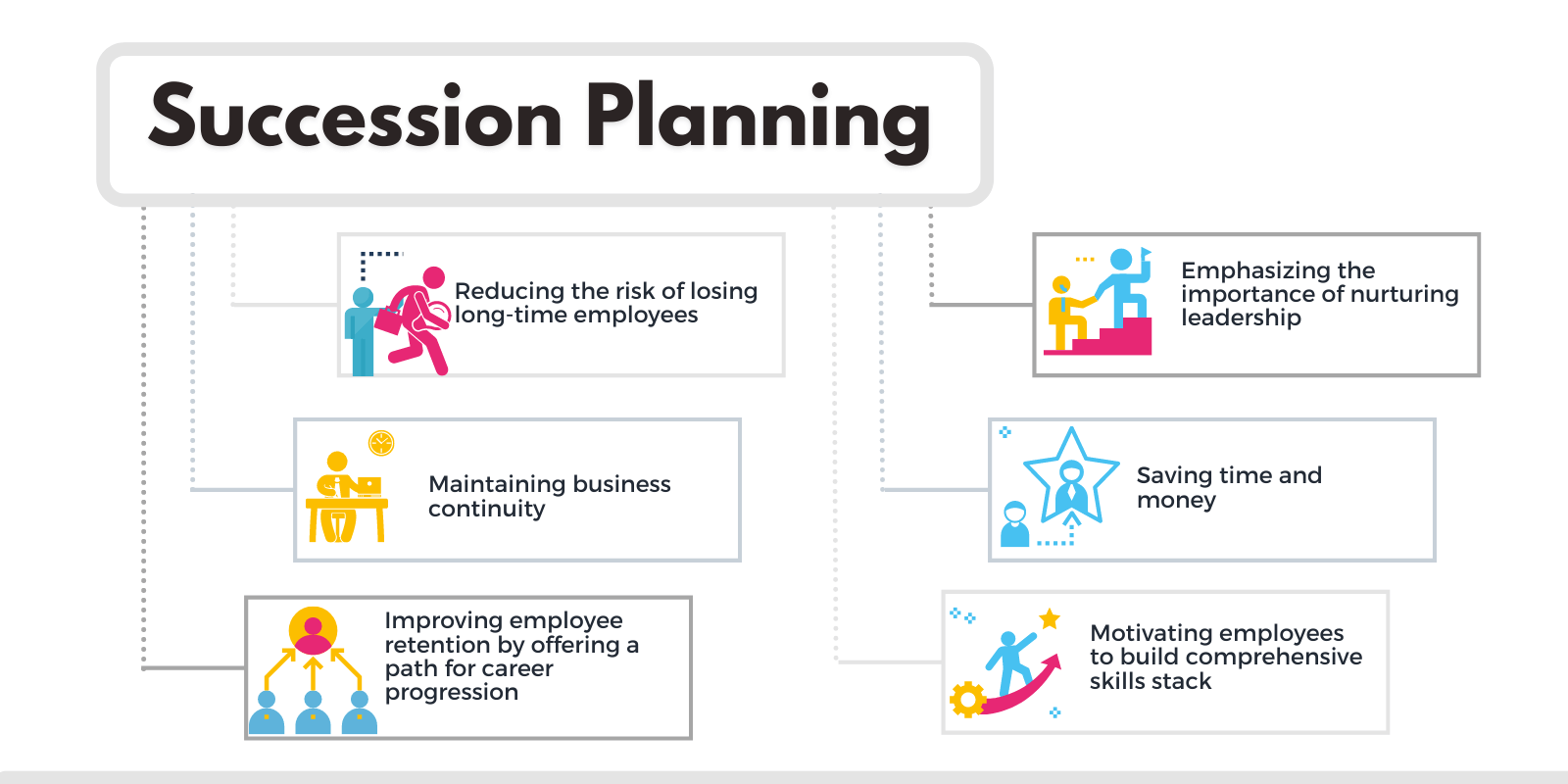:max_bytes(150000):strip_icc()/succession-planning.asp-final-e6b56a68f053456497b08ad9df9077ab.png)
Succession planning
Succession planning might sound like a fancy term, but it’s really just about making sure your business is ready for the future, no matter what happens. Think of it like a well-oiled machine: you need to know how to keep things running smoothly even when key players aren’t around.
This is crucial for any business, big or small. Whether it’s the founder retiring, an unexpected illness, or simply the need for a fresh perspective, having a solid succession plan in place can save your business from major disruptions and ensure its long-term success.
Why is Succession Planning So Important?
Maintaining Business Continuity

The most obvious reason for succession planning is to ensure the smooth and uninterrupted operation of your business.
If the key decision-maker suddenly becomes unavailable, a well-defined plan can minimize chaos and ensure that critical operations continue.
Protecting Business Value
A well-executed succession plan can help protect and even enhance the value of your business.

By identifying and developing internal talent, you can cultivate a strong leadership pipeline.
Attracting and Retaining Top Talent
A company that demonstrates a commitment to long-term growth and stability is more attractive to top talent.
A clear succession plan signals to employees that there are opportunities for advancement and that their contributions are valued.
Improved Decision-Making
The process of developing a succession plan forces you to critically evaluate your current leadership structure and identify potential weaknesses.
Increased Investor Confidence
For businesses seeking external funding, a well-defined succession plan can significantly increase investor confidence.
It demonstrates that the company is well-managed and has a long-term vision.
Key Steps in Developing a Succession Plan
1. Define Your Business Goals
Start by clearly defining your business goals and objectives.
What are your long-term aspirations?
2. Identify Critical Roles
Determine which roles are essential to the success of your business.
These are typically roles with high levels of responsibility, such as CEO, CFO, COO, and key department heads.
3. Assess Current Talent
Evaluate the skills, experience, and potential of your existing employees.
Do you have internal candidates who could successfully fill critical roles?
4. Develop Succession Plans for Key Roles
Create individual succession plans for each critical role.
This should include a list of potential successors, their development needs, and a timeline for their progression.
5. Implement a Regular Review Process
Regularly review and update your succession plan.
Business conditions and personnel changes can necessitate adjustments to your plan.
Developing Internal Talent:
Investing in the development of internal talent is crucial for successful succession planning. Here are some effective strategies:
Mentoring Programs
Pair promising employees with experienced leaders to provide guidance, support, and mentorship.
Cross-Training Initiatives
Expose employees to different areas of the business to broaden their skills and experience.
Leadership Development Programs
Offer training programs that focus on leadership skills, such as decision-making, communication, and strategic thinking.
Job Shadowing Opportunities
Allow employees to shadow senior leaders to gain firsthand experience and observe their decision-making processes.
Performance Reviews and Feedback
Provide regular and constructive feedback to employees on their performance and identify areas for improvement.
Succession Planning for Different Types of Businesses:
The specific approach to succession planning will vary depending on the size and nature of your business.
Small Businesses
Focus on identifying key roles and developing contingency plans for unexpected events.
Family Businesses
Address potential conflicts and power struggles among family members.
Non-Profit Organizations
Focus on identifying and developing leaders who share the organization’s mission and values.
Overcoming Common Challenges:
Succession planning can be challenging, but with careful planning and execution, it can be a valuable asset to your business. Here are some common challenges and how to overcome them:
Resistance to Change
Communicate the importance of succession planning to all employees.
Lack of Qualified Internal Candidates
Invest in employee development programs to cultivate internal talent.
Inadequate Resources
Lack of Commitment from Senior Leadership
Conclusion
Succession planning is not just about preparing for the future; it’s about ensuring the long-term sustainability and success of your business. By taking the time to develop a comprehensive plan and invest in the development of your future leaders, you can navigate transitions smoothly, protect your business value, and create a more resilient and successful organization.